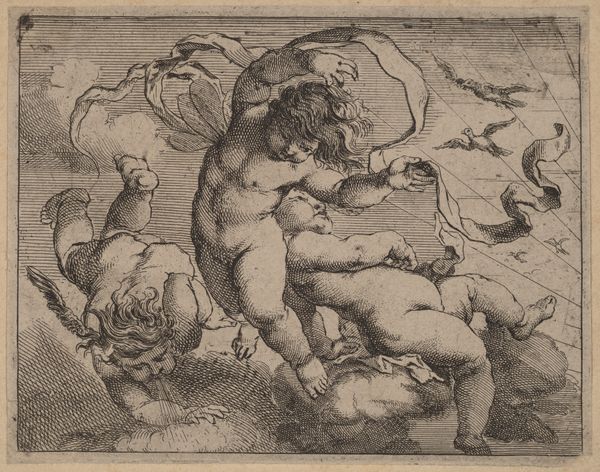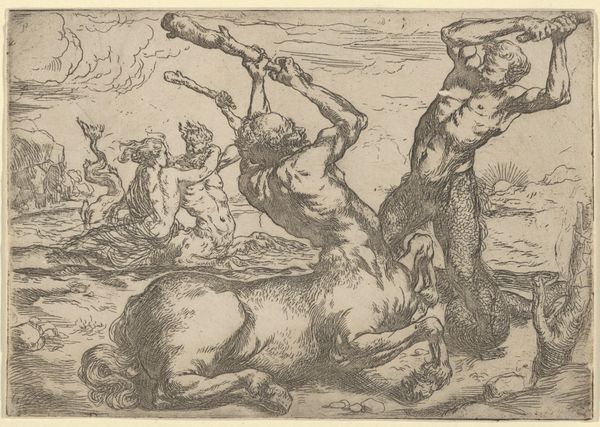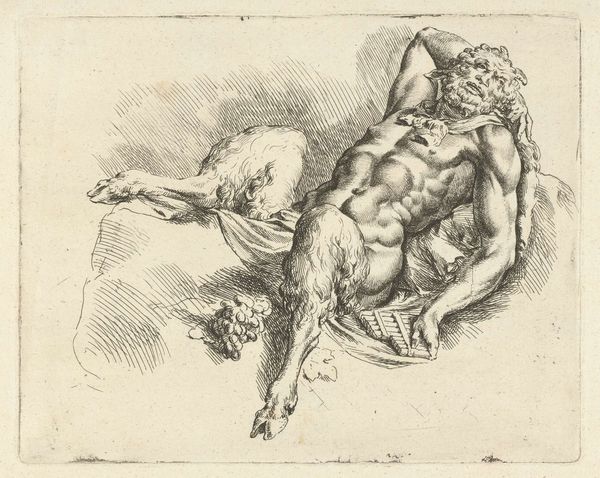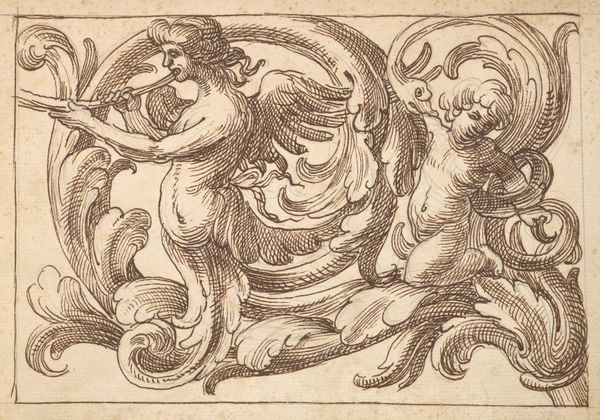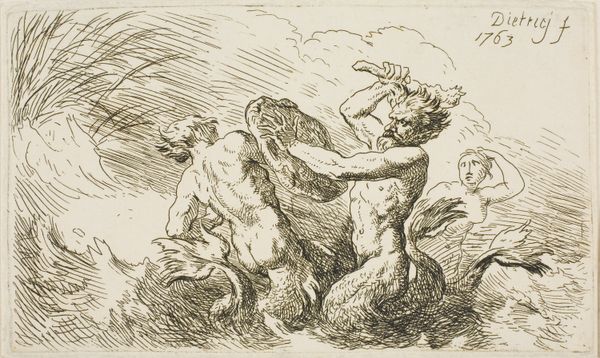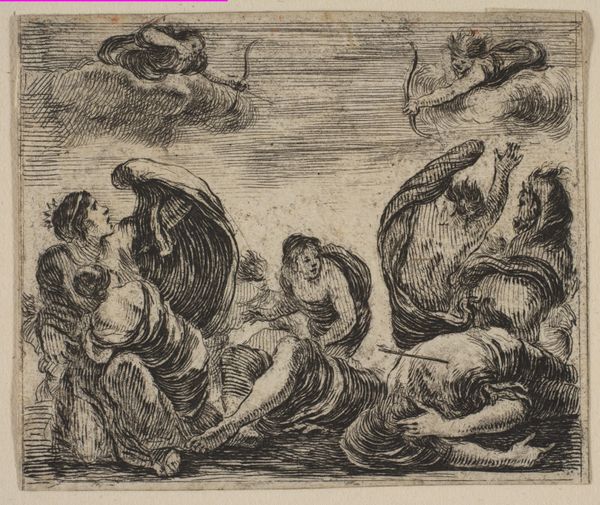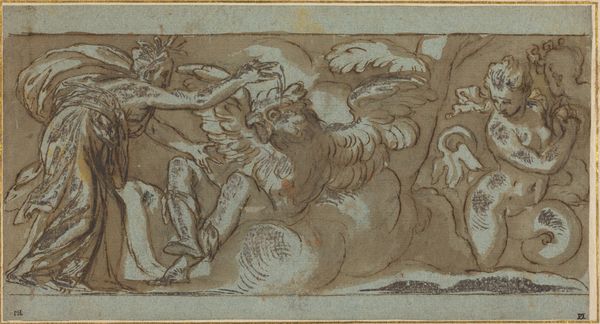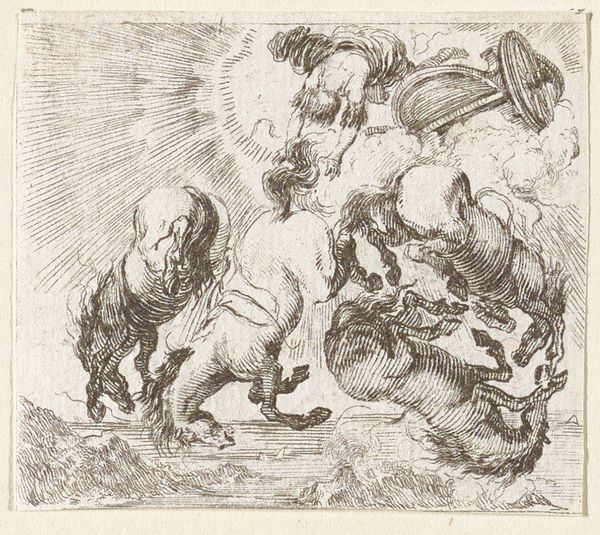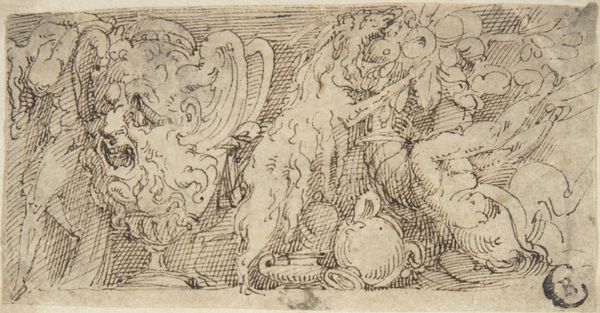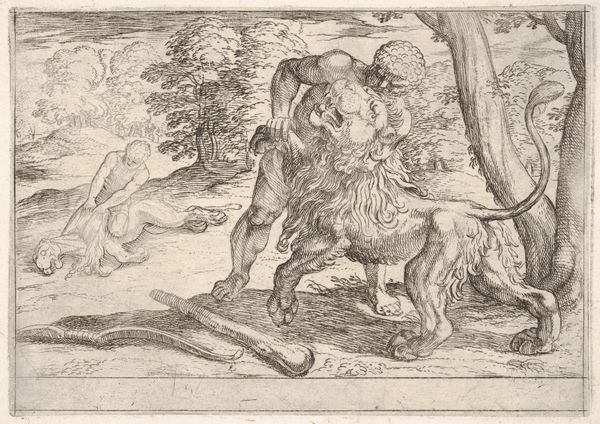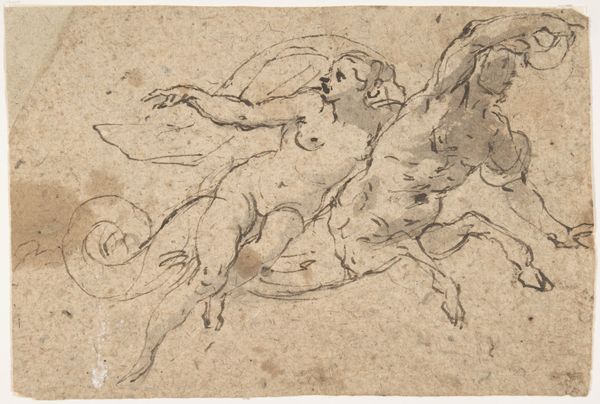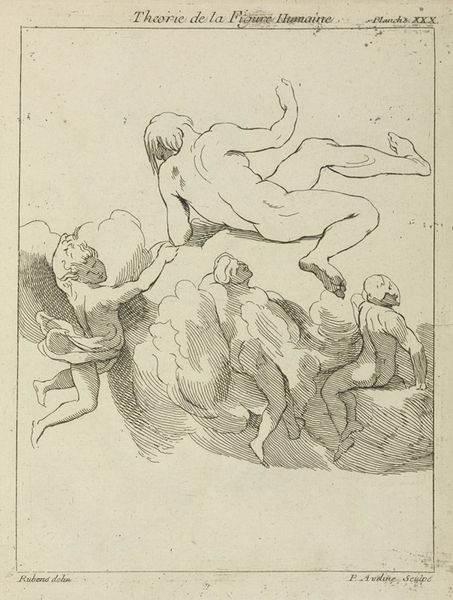
print, etching
#
allegory
#
baroque
# print
#
pen sketch
#
etching
#
caricature
#
figuration
Dimensions: height 79 mm, width 100 mm
Copyright: Rijks Museum: Open Domain
Curator: Here we have "Three Flying Putti with Banderoles," an etching and drypoint attributed to Cornelis Schut, dating from approximately 1618 to 1655. It’s part of the Rijksmuseum collection. Editor: Wow, talk about dynamic! My first thought is the incredible sense of movement, like these cherubs are perpetually tumbling out of the frame. It's almost chaotic, but in a delightful way. Curator: The medium itself, printmaking, speaks volumes. Etching and drypoint allowed for the reproduction of images, democratizing art to a degree. Schut's choices regarding line quality – thin, scratchy, dense in shadow – become incredibly important, showing a deliberate approach to producing mood and affect through labor. Editor: Absolutely. You can practically feel the pressure of the artist's hand creating those dense lines, that scribble on the clouds—it gives it such a raw energy! And those cherubs, so full of life, almost seem caught mid-wrestle among the clouds. Is it just me, or is there a hint of cheeky humor in their expressions? Curator: Baroque art loved allegory, and cherubs are frequent stand-ins for love or religious inspiration. The banderoles, or ribbons, would likely have held inscriptions or symbolic imagery originally. What's missing becomes as important as what’s there, posing the viewer into meaning production, as labor continues outside the frame! Editor: I love how the ribbons dance around them, almost as if the wind has a life of its own! They contribute to that feeling of joyful abandon, a release of energy and pure bliss. Plus, the imperfection adds charm. It's nice to see classical subjects imbued with a sort of down-to-earth realness. Curator: Precisely. It avoids high seriousness and leans into relatable humanness, playfully toying with established ideas of the Baroque era through the artist's careful mark making and considerations about process. Editor: Seeing art through that lens makes you appreciate all the work it represents –the planning, experimentation, execution, everything. So many hands may have had to do work in making it exist for consumption! This gives you a deep respect for that art making it that much more accessible to appreciate the artistry in itself. Curator: I agree; reflecting on the materiality brings attention to all who enabled such a creation.
Comments
No comments
Be the first to comment and join the conversation on the ultimate creative platform.
